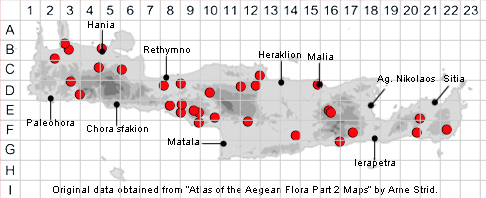SPECIES DESCRIPTION
VICIA BITHYNICA
Family and Genus:- See- LEGUMINOSAE/Sect. FABA
Common Names:- None
Homotypic Synonyms:- Ervum bithynicum. Lathyrus bithynicus.
Meaning:- Vicia (L) Binder, to bind, a name used by the Roman naturalist and
philosopher Pliny for vetch.
Bithynica (L) From Turkey.
General description:- Subglabrous, weak-stemmed annual.
Stems:- 20-60 cm.
Leaves:-
1) Leaflets, 20-50 x 2-20 mm, 1-2(-3) pairs, narrowly elliptical, acute; tendril simple
or branched.
2) Stipules, conspicuous, obliquely ovate, dentate-lacerate.
Flowers:-
1) Solitary or paired in the upper leaf axils.
2) Peduncle, usually short but occasionally up to 5 cm.
3) Calyx tube, narrowly campanulate, slightly gibbous;
a) teeth, subequal, lanceolate-acuminate, somewhat longer than the tube.
4) Corolla, 15-20 mm:
a) standard, pale lilac-blue.
b) wings, and keel, whitish.
Fruit:-
1) Legume, 25-50 x 7-10 mm, brown or yellow, pubescent.
2) Seeds, smooth 4-7, hilum 1/7-1/6 of the circumference.
Key features:-
1) Seeds, smooth.
2) Leaflets, 1-3 pairs.
3) Wings, and keel whitish.
4) Stipules, denticulate to serrate, not bipartite.
Habitat:- Salines, freshwater meadows, seasonally wet spots in dry open shrubby
vegetation, open woodland, olive groves and field margins. 0-900 m.
Distribution:- Throughout Greece. - Widespread in W Europe, the Mediterranean
area, Anatolia and eastwards to Afghanistan. Moderately distributed across Crete,
but more so in the west.
Flowering time:- Late Mar to early June.
Photos by:- Steve Lenton
